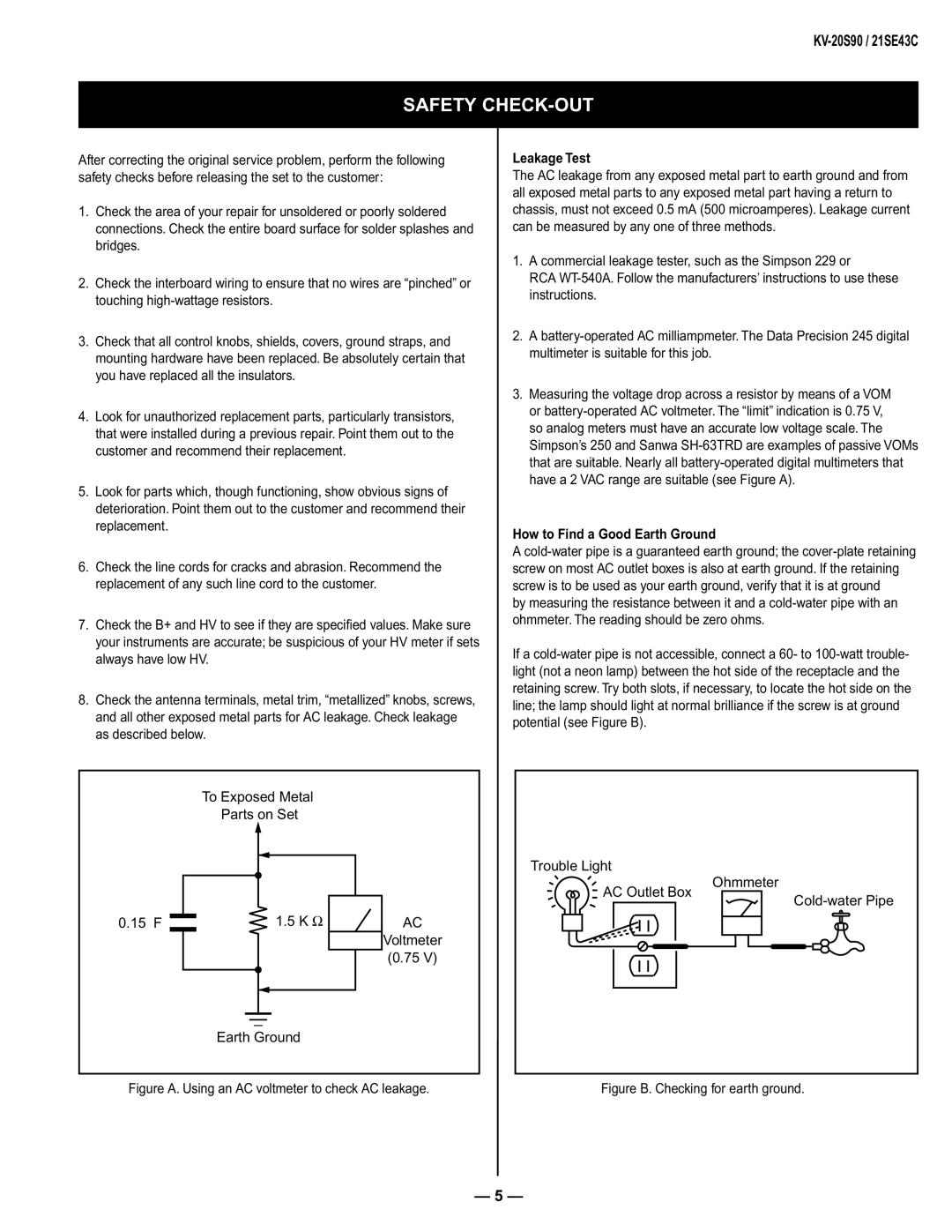
SAFETY CHECK-OUT
After correcting the original service problem, perform the following safety checks before releasing the set to the customer:
1.Check the area of your repair for unsoldered or poorly soldered connections. Check the entire board surface for solder splashes and bridges.
2.Check the interboard wiring to ensure that no wires are “pinched” or touching
3.Check that all control knobs, shields, covers, ground straps, and mounting hardware have been replaced. Be absolutely certain that you have replaced all the insulators.
4.Look for unauthorized replacement parts, particularly transistors, that were installed during a previous repair. Point them out to the customer and recommend their replacement.
5.Look for parts which, though functioning, show obvious signs of deterioration. Point them out to the customer and recommend their replacement.
6.Check the line cords for cracks and abrasion. Recommend the replacement of any such line cord to the customer.
7.Check the B+ and HV to see if they are specifi ed values. Make sure your instruments are accurate; be suspicious of your HV meter if sets always have low HV.
8.Check the antenna terminals, metal trim, “metallized” knobs, screws, and all other exposed metal parts for AC leakage. Check leakage as described below.
Leakage Test
The AC leakage from any exposed metal part to earth ground and from all exposed metal parts to any exposed metal part having a return to chassis, must not exceed 0.5 mA (500 microamperes). Leakage current can be measured by any one of three methods.
1.A commercial leakage tester, such as the Simpson 229 or
RCA
2.A
3.Measuring the voltage drop across a resistor by means of a VOM or
How to Find a Good Earth Ground
A
by measuring the resistance between it and a
If a
To Exposed Metal
Parts on Set
0.15 F |
|
|
| 1.5 K Ω | AC |
|
|
| |||
|
|
|
|
| Voltmeter |
|
|
|
|
| (0.75 V) |
|
|
|
|
|
|
Trouble Light
Ohmmeter
AC Outlet Box
Earth Ground
Figure A. Using an AC voltmeter to check AC leakage. | Figure B. Checking for earth ground. |
— 5 —
